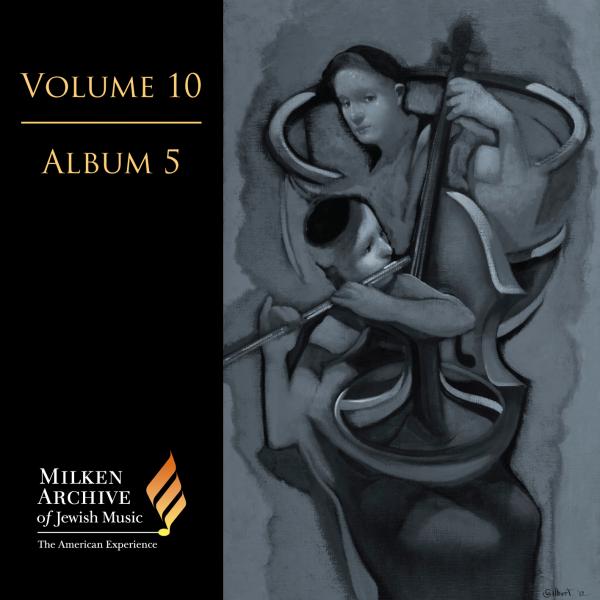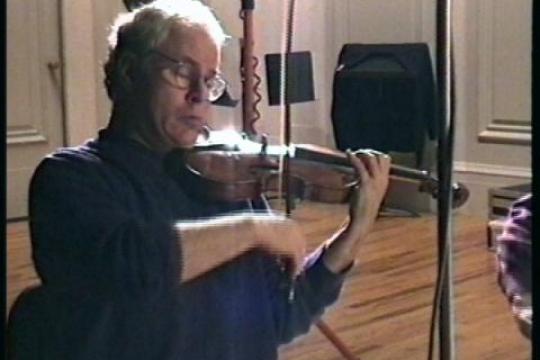Tracks
Liner Notes
In the early 1970s Darius Milhaud was approached about a commission by the Braemer Foundation of Philadelphia. That local foundation had, in conjunction with Congregation Adath Jeshurun in Elkins Park (a Philadelphia suburb), previously sponsored competitions with monetary awards for what it called “Hebraic string quartets”—which it defined as works demonstrably based on established Jewish liturgical music traditions. After two composers, Nachum Amir and Yehuda Ben Cohen, had each received this award, the foundation reoriented its direction from competitions toward the commissioning of new works by well-known composers, and it turned first to Milhaud. The guidelines remained the same: the piece was to draw directly and identifiably on musical material that had been documented in one or more reliable notated musicological source. And the composer’s intent must be to create a “Jewish work.” However, according to Milhaud’s widow in her recollections thirty years later, the foundation was even more specific in Milhaud’s case, in view of his known Provençal Jewish heritage. He was asked expressly to incorporate in his quartet melodies of the Provençal rite—the liturgical tradition also known as minhag Carpentras—insofar as possible from his youthful memories of family celebrations and services at the synagogue in Aix-en-Provence.
Minhag Carpentras (the custom of Carpentras) so named after one of the four cities where it once flourished, was the distinct liturgical tradition of the Jews of the Comtat Venaissin—a secluded region of Provence where Jews lived, until the Revolution, within the domains and under the protection of the Church. In addition to Carpentras, the four communities of the Comtat included Cavaillon, Avignon, and L’Isle-sur la Sorgue. The Jews who were native to that region as late as the early 20th century are believed to have been the last descendants of the Languedoc and Provençal Jews who had been expelled from the kingdom of France in the 14th and 15th centuries (the Comtat was under papal sovereignty), whose liturgical customs they inherited and preserved. Jewish life in the region has been traced to early Jewish settlements in Gaul at the time of the Roman Empire and its conquest.
As he had done previously, especially with regard to the Service Sacré, Milhaud seized the opportunity to share a heritage virtually unknown to American Jewry and at the same time to explore the synagogue experience of his childhood and his own French-Jewish identity. Mme. Milhaud once recalled that whenever her husband felt inspired while immersed in a piece of music, “at a spiritual moment he would incorporate a fragment of the minhag Carpentras.” By the postwar decades, however, minhag Carpentras—which was entirely different from either the Ashkenazi or the Sephardi services Milhaud might have known from his Paris days—had become nearly extinct in practice, and relying solely on his childhood memory, with the added burden of separating those melodies from the acquired repertoire of his adult life in America as well as France, could have proved limiting. Fortunately, much of the Provençal rite is preserved in a 19th-century compendium, Z’mirot yisrael k’minhag Carpentras: chants Hébraïques suivant le rite des Communautés Israëlites de l’ancien Comtat-Venaissin (Hebrew Chants/Melodies According to the Rite of the Jewish Communities of the Old Comtat Venaissin/minhag Carpentras), which was compiled, edited, notated, and published in 1885 by Messrs. Jules Salomon and Mardochée Crémieu (both from Aix) under the auspices of the Grand Rabbi of the Consistoire of Marseilles. Milhaud consulted this valuable source and used it in tandem with his own personal recollections in identifying the melodic foundations for this quartet, which was published only posthumously (1981) under the present title and subtitle.
Études is a potpourri of tune references and fragments from the musical repertoire of minhag Carpentras, not an exposition of tunes in their entirety. Among the melodies from which Milhaud quotes and then develops motives and phrases are plaintive tunes from Rosh Hashana and Yom Kippur liturgies (ḥatzi kaddish for the morning service, kol atzmotay, mi khamokha av haraḥamim, and aḥot k’tana, a piyyut—liturgical poem—not found in the Ashkenazi rite); from the Three Festivals, including one seder song; for Tisha ba’av (the Ninth of Av, commemorating the destruction of the First and Second Temples); for the Sabbath (l’kha dodi); and for life-cycle events such as weddings. All these elements are woven into a lucid, lyrical, and transparent work that typifies Milhaud’s manifesto of clarity and in which the polyphonic textures are never allowed to obscure the melodic source material.
This quartet received its premiere in 1973 at Congregation Adath Jeshurun, performed by an ad hoc professional quartet that took the synagogue’s name for the occasion. After that the piece fell into oblivion, where it remained even after its publication in Paris. Although it could be found in some bibliographic listings and catalogues of Milhaud’s works, even Milhaud advocates and aficionados were generally unaware of its existence. Its rediscovery by the Milken Archive occurred by chance in the course of a filmed interview with Mme. Milhaud in her Paris home in the summer of 2000 as part of the Archive’s oral history project. Its public revival was marked in 2003 by its New York premiere (and its only known performance to date apart from the synagogue concert in Elkins Park) at the Jewish Theological Seminary, played by the Fountain Ensemble as part of the Seminary’s and the Milken Archive’s jointly sponsored international conference- festival, “Only in America.”
Credits
Composer: Darius MilhaudPerformers: Juilliard String Quartet

